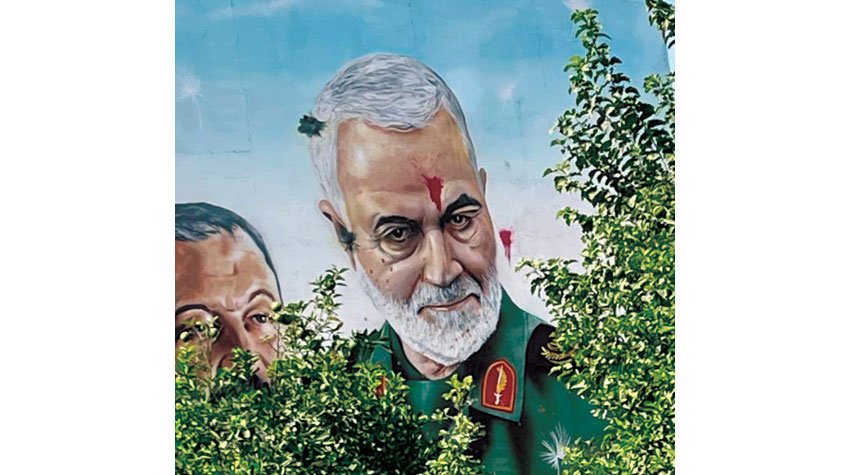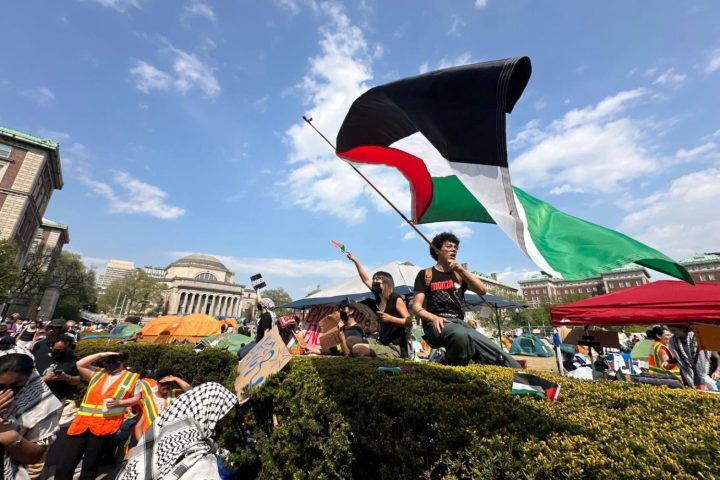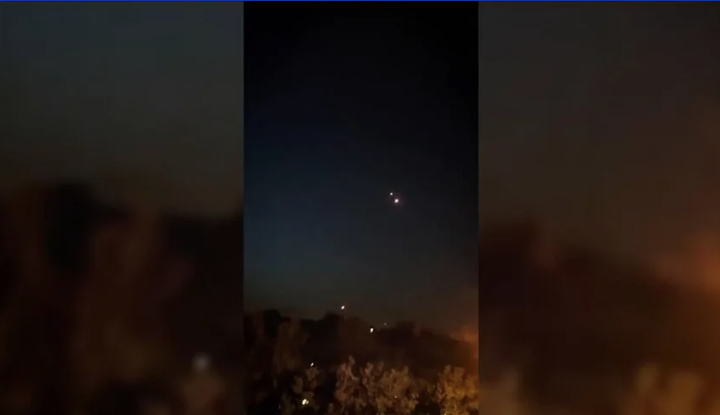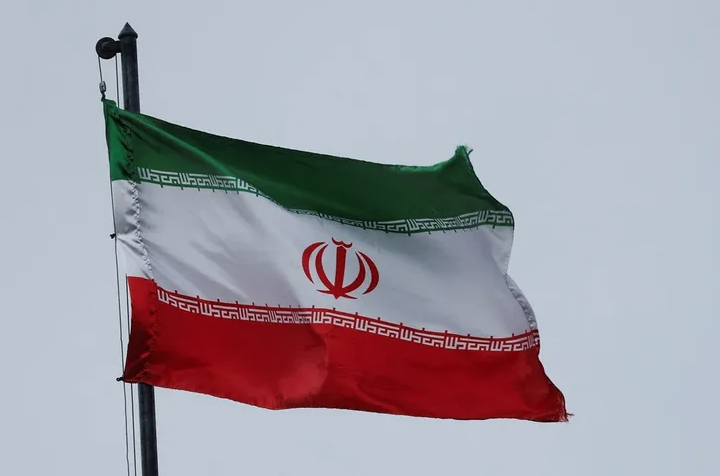Student boycotts in Iran have increased repression by the authorities, with the government blaming “separatists”. Iranians shut down a gold mine in Baluchistan.
The protests that have occupied Iran’s agenda for weeks continued in many cities on Wednesday. University students defied security measures and repression on the 46th day of the protests. An official close to the Iranian president said the results of an opinion poll showed that 65 percent of the public supported the protest movement.
After 22-year-old Mahsa Amini was killed in custody seven weeks ago for wearing clothes deemed “indecent” by “Morality Patrols”, anti-regime demonstrations continue to rock the country.
The recent popular protests, one of the toughest tests the Iranian regime has faced in decades, have gained momentum. Iran has accused its enemies abroad and their agents of fueling the protest movement.
Authorities warned protesters last week to leave the streets, but the nationwide protests show no sign of abating.
Mourning ceremonies for protesters killed by security forces have turned into demonstrations, adding to the authorities’ difficulties. On Tuesday, several cities in Iranian Kurdistan witnessed a similar ceremony. Dozens of people attended Siyavish Mahmudi’s funeral in Zahra cemetery, south of Tehran.

The Coordination Council of Iranian Student Unions posted on social media a photo of students breaking the iron bars at the entrance to the university rectorate. The board also shared videos of nightly protests organized by students of Urumiyeh Industrial University.
The university students’ anger has grown following decisions to temporarily deprive some protesting students of their education and expel them from university residences. Students have also complained about arrest warrants and the abduction of several professors by plainclothes police officers.
Students continued to issue leaflets on Tuesday. In a new statement, students at Beheshti University said: “It has been more than 40 days since the beginning of public protests at the community and university level. The whole world has seen your oppression in order not to meet the just demands of the students.”
At Senendej University’s Faculty of Medicine, security forces fired tear gas at protesting students. A day after the clashes, Kurdish male and female students at the same university played “debke”, a local dance.
The university boycotts come as Iran prepares to celebrate “Student Day” next Saturday. Student Day is celebrated in Iran to mark the anniversary of the 1979 storming of the US Embassy by students who supported the regime’s founding leader Khomeini and held 53 diplomats hostage for 444 days.
The official Mehr news agency reported that Iranian President Ibrahim Reisi will deliver a speech on the day, which is marked annually by state institutions.
Government spokesman Ali Bahadeh Jahrumi issued the following statement: “Hamas demonstrations that incite rebellion and chaos do not resonate with the popular base and show that the enemies’ efforts are in vain.”
Broad public support
Contrary to the government spokesperson, the head of Iranian regime leader Supreme Leader Khamenei’s representative body in universities, Mostafa Rustemi, said that the results of a new opinion poll show that 55 percent of Iranians support the protests. “83 percent of these people did not participate in the protests, but still support them,” Rustemi explained.
According to Rustemi, this means that 65 percent of the people support the protest marches. Another survey showed that 60 percent of the protests’ supporters complain about the economy and living conditions, and 20 percent are dissatisfied with administrative corruption, Rustemi said.
Regarding the protesters’ demands, Rustemi said that 59 percent demanded reforms in living conditions, 6 percent demanded the lifting of the internet ban and “only 3.5 percent demanded the abolition of the headscarf requirement.” Rustemi said it should be acknowledged that the economic situation in the country has deteriorated over the past decade and that there have been problems in infrastructure.
“People are risking their lives to take to the streets, but their hope that they can defeat the regime is much greater than their fear,” Iran expert Umid Mimarian told Reuters.
Threat to cut throat
Demonstrators staged a march on Jumhuri Street, which connects the two districts of Pasteur and Baharistan region.
According to the “Tasvir 1500” tweeter account and videos posted on websites, residents of Tehran’s Ekbatan neighborhood shouted the slogan “Death to the Dictator” late Monday. Security forces used sound bombs to disperse the movement.
Videos from Ekbatan and Citaker districts, neighboring Azadi district in western Tehran, have sparked widespread debate among Iranians. In several videos, a voice was heard over loudspeakers in Ekbatan threatening residents, saying, “We will behead our women and children if necessary, but we will not allow any harm to come to this country.”
The IRGC’s Fars News Agency confirmed the authenticity of the video and commented: “Last night, after the speech from the loudspeakers, websites reported that the police threatened the protesters. But if we listen carefully to this voice, we will see that the speaker is speaking in defense of the people and the country.”
A video shows a crowd of security forces in a square separating apartments in Citaker. The security forces are heard saying over a loudspeaker, “All of our fellow law enforcement officers are here out of deep love and respect for our leader. We are here every night now. We will make you uncomfortable.”
Other videos showed security forces continuing to send threatening messages over loudspeakers late into the night. A loud explosion was heard in a video shared from Ekbatan district.
Residents of the Ekbatan area accused police and Besij forces of breaking down the doors of residential buildings. On Monday, videos were released showing the effects of destruction in residential areas.
Gold mine closure
The Iranian Human Rights Activists’ News Agency (Hrana) reported strikes in several cities, including Tehran and Isfahan, according to the Reuters news agency quoted by Sharq al-Awsat.
A protest disrupted gold extraction work at the Ancerik mine in Taftan, Baluchistan province.
Local websites published photos and video footage of dozens of people gathered outside the gold mine in Taftan. Police vehicles were seen in the photos. The website “Rasd Balochistan” said that the tense residents blocked the mine. “The mines belong to the Baloch people and they will not allow their wealth to be mined by foreigners,” locals said.
Activist Atna Daimi said on Twitter that the popular closure of the Ancerik mine and the refusal to allow the Islamic Republic to extract gold was “very important news that should not be ignored.”
The death toll is rising
Hrana reported yesterday that the protests had resulted in the deaths of at least 287 protesters and that at least 46 children had been killed in the crackdown by the authorities, as well as the deaths of 36 security personnel.
The organization, which closely monitors human rights violations in Iran, said 14,161 people, including 300 students, were arrested, while 797 protests were organized in 133 cities and 129 universities.
Iran’s hardline judiciary will hold “public” trials of nearly 1,000 people accused of inciting protests in Tehran, in a decision that accelerated efforts to quell weeks of demonstrations. On Saturday, the trial of five people accused of crimes punishable by the death penalty, who were behind the protests, began in Tehran.
Mohammad Kabadlo was sentenced to death during the first session of the trial, his mother said, according to a video released by the Washington-based Abdorrahman Boroumand Center.
At least 46 journalists have been arrested so far, according to the New York-based Committee to Protect Journalists.
Iranian news websites quoted Iman Shamsayi, Director of Newspaper and News Agencies Affairs at the Iranian Ministry of Culture, as saying: “Authorities have so far released eight detained journalists. The accused journalists were not arrested due to recent events. No journalist has been arrested in Tehran for media activity.”
In a joint statement by Iran’s Intelligence Ministry and IRGC intelligence on Friday, two female journalists were accused of being agents of the US Central Intelligence Agency. More than 300 Iranian journalists have demanded the release of their colleagues.
Hassan, the brother of prominent free speech activist and Wall Street Journal writer Hossein Rungi, who was arrested shortly after the protests began, posted on Twitter that the activist was “on hunger strike and not well.”
London – Tehran / Sharq al-Awsat





